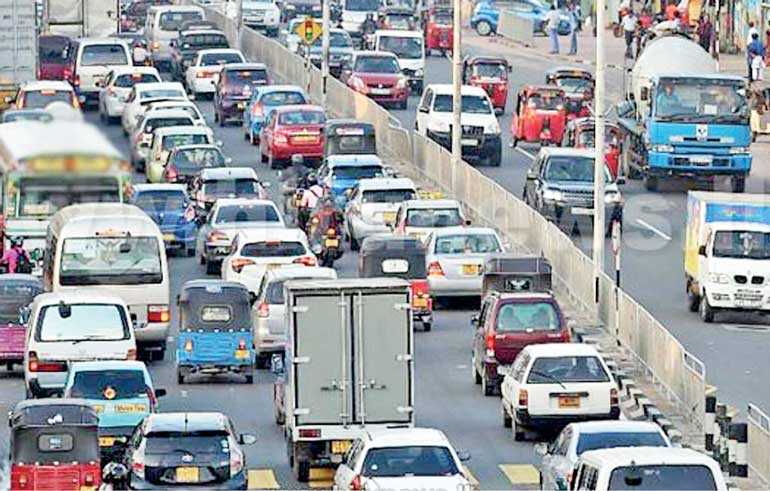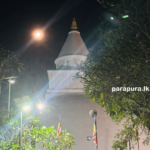I vividly recall a moment from my childhood, around the age of seven or eight, when I fell ill with a fever. My mother, ever diligent in our care, took me to Kiribathgoda Junction to seek medical attention. The identity of the doctor who treated me remains inconsequential, as, at that time, neither we nor the residents of Kiribathgoda were accustomed to verifying the credentials of those who practiced medicine.
This recollection resurfaces in my mind because of the sudden arrival of a Tamil doctor in our neighborhood. He appeared somewhat like a transient figure, an enigma in the community. His treatments, however, were remarkably effective—so potent that they seemed almost miraculous, akin to a sudden jolt that instantly restored health. His expertise in treating wounds was particularly notable. However, the local populace displayed a certain naivety, allowing the doctor’s younger brother to dispense medicine in his absence. This practice continued until rumors spread about authorities cracking down on unlicensed medical practitioners, prompting the doctor’s temporary disappearance. Eventually, he resurfaced in a nearby area, roughly a kilometer away, where he resumed his practice and eventually settled with his family. His children now attend the local schools, a testament to the transformations that have taken place over time.
Reflecting on Kiribathgoda in those days, one is reminded of a world vastly different from the present. Mobile phones, social media platforms like Facebook, and cab services were nonexistent. Public awareness was shaped largely by newspapers, the primary medium of information dissemination. Unlike today, Kiribathgoda Junction was free from the congestion that plagues it now. Public transportation was sparse; apart from the occasional CTB bus, a small Rosa bus was the only alternative. Bicycles were a more common mode of transport, and my father, who worked at the Tyre Corporation, commuted home on his bicycle after completing his shift.
During my early schooling years, I attended Dharmaloka Junior College until the fifth grade. My elder sister and I would take a CTB bus from Thorana Junction, then navigate our way through Kiribathgoda on foot. Our mother, cautious about our safety, forbade us from passing through the housing scheme, as it appeared somewhat desolate at the time. Instead, we traversed through the fields from Mayamawata, passing by my mother’s ancestral home—her Mahagedara.
It was also the period when Viharamahadevi Girls’ School was inaugurated in Kiribathgoda. My elder sister attended St. Paul’s Girls’ School in Kelaniya, but our other sisters were among the first students at the newly established Viharamahadevi Girls’ School. Ironically, the only sibling who did not enroll there, my eldest sister, later became a teacher at Viharamahadevi before eventually transferring to Dharmaloka College. It is remarkable how the same Dharmaloka College that I attended became the alma mater for the next generation of our family.
Our household followed a strict financial routine. The day after my father received his salary, my mother would venture to Kiribathgoda to procure an entire month’s worth of groceries. On one such occasion, when I happened to fall ill, she carried with her a shopping bag and a yellow gallon container for purchasing coconut oil, a staple in our home at the time. I recall vividly how the doctor fixated on that container during my consultation.
“What kind of can is that?” he inquired.
“We are on our way to buy groceries for the month. This is for coconut oil,” my mother replied.
His response was laced with condescension: “You consume coconut oil and then fall ill! What an unhealthy habit you people have.”
That day marked a significant shift in our household. My mother, influenced by the doctor’s remark, ceased purchasing coconut oil. The yellow can disappeared from our kitchen, replaced by a monthly supply of vegetable oil packaged in tins adorned with images of carrots and leeks. We accepted this transition unquestioningly, believing it to be a healthier alternative.
Only at the age of forty-seven did I fully comprehend the implications of that moment. My understanding did not stem from formal education; had our school curriculum included such insights, we might have continued using coconut oil without hesitation. Nor was this knowledge derived from television commercials—I do not even own a television. The truth eluded me until my forties when my engagement with history illuminated the broader socio-economic manipulations at play.
Why, I ponder, do most doctors remain oblivious to such realities? Or, if they are aware, why do they remain silent? Imagine the impact if not all, but at least the majority of medical professionals prioritized the well-being of their patients over the directives of Western pharmaceutical corporations. Sadly, many people in Sri Lanka, including myself, have seldom had the privilege of receiving treatment from doctors who prioritize patient welfare above external influences.
We live in an era where information is readily accessible, yet those who possess the authority to challenge injustices remain complicit in their silence. The media, once the guardian of public awareness, often turns a blind eye to such critical issues. Politicians exacerbate the situation, and government officials follow suit. The root of this crisis, however, runs much deeper.
When colonial rule ended in 1948, it was not merely the political landscape that changed. The British departure did not sever the Sinhalese people’s capacity for empathy—it severed our ability to act upon it. Today, we feel the weight of injustices, we recognize the need to respond, but we find ourselves incapable of doing so. The forces that govern us—political, economic, and institutional—have rendered us inert, conditioned to comply rather than resist.
This realization compels me to question: how did we arrive at this juncture? And more importantly, how do we reclaim the agency that was taken from us?


